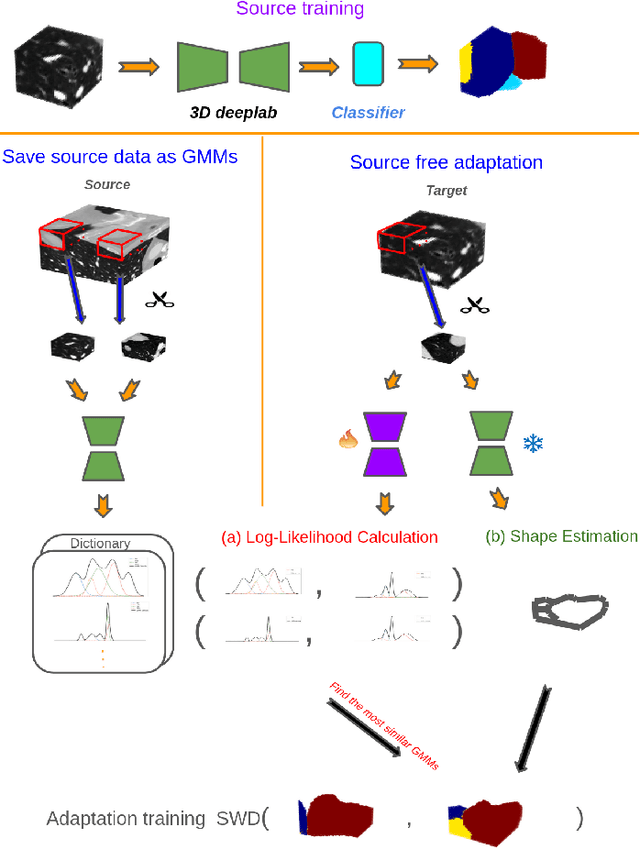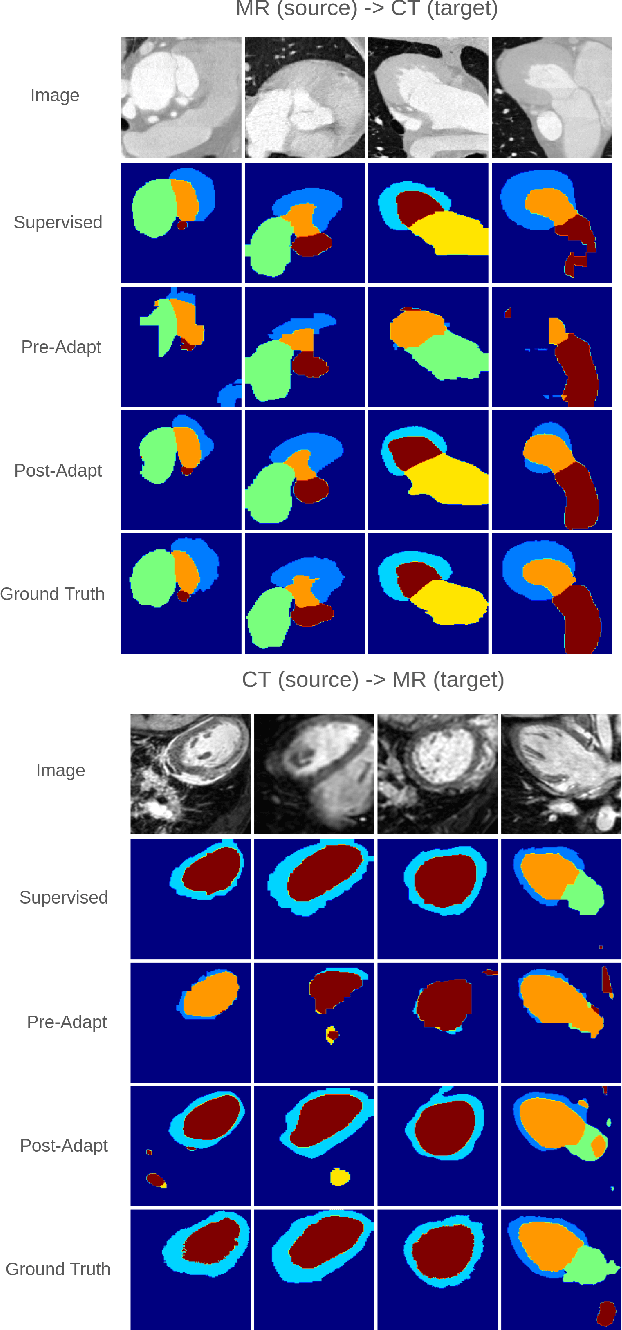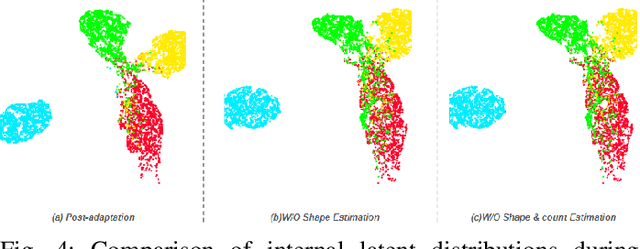Ruitong Sun
Cross-Domain Distribution Alignment for Segmentation of Private Unannotated 3D Medical Images
Oct 11, 2024



Abstract:Manual annotation of 3D medical images for segmentation tasks is tedious and time-consuming. Moreover, data privacy limits the applicability of crowd sourcing to perform data annotation in medical domains. As a result, training deep neural networks for medical image segmentation can be challenging. We introduce a new source-free Unsupervised Domain Adaptation (UDA) method to address this problem. Our idea is based on estimating the internally learned distribution of a relevant source domain by a base model and then generating pseudo-labels that are used for enhancing the model refinement through self-training. We demonstrate that our approach leads to SOTA performance on a real-world 3D medical dataset.
Explainable Artificial Intelligence Architecture for Melanoma Diagnosis Using Indicator Localization and Self-Supervised Learning
Mar 26, 2023Abstract:Melanoma is a prevalent lethal type of cancer that is treatable if diagnosed at early stages of development. Skin lesions are a typical indicator for diagnosing melanoma but they often led to delayed diagnosis due to high similarities of cancerous and benign lesions at early stages of melanoma. Deep learning (DL) can be used as a solution to classify skin lesion pictures with a high accuracy, but clinical adoption of deep learning faces a significant challenge. The reason is that the decision processes of deep learning models are often uninterpretable which makes them black boxes that are challenging to trust. We develop an explainable deep learning architecture for melanoma diagnosis which generates clinically interpretable visual explanations for its decisions. Our experiments demonstrate that our proposed architectures matches clinical explanations significantly better than existing architectures.
 Add to Chrome
Add to Chrome Add to Firefox
Add to Firefox Add to Edge
Add to Edge